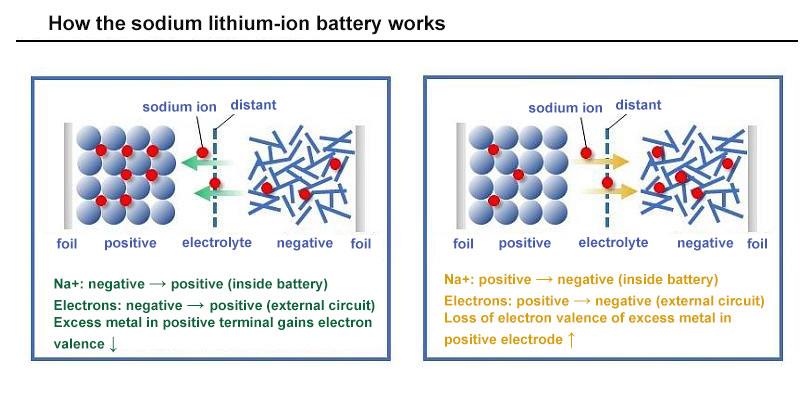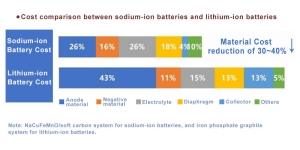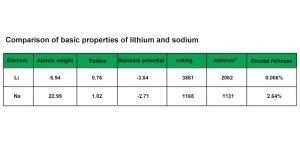Are sodium-ion batteries better than lithium
Understanding the Basics of Sodium-Ion and Lithium-Ion Batteries
Both sodium-ion and lithium-ion batteries share a fundamental operational principle where ions move between the cathode and anode, yet they diverge significantly in their material composition and electrochemical behavior.
-
Lithium-Ion Batteries: These are the current standard for high-performance energy storage across a variety of applications, from mobile phones to electric vehicles. Lithium’s electrochemical potential allows for high voltage and energy density, but its scarcity and mining implications pose environmental and economic challenges.
-
Sodium-Ion Batteries: Utilizing sodium instead of lithium, these batteries leverage one of the most abundant elements on earth. Sodium’s ionic radius is larger than lithium’s, which initially posed challenges in achieving high energy densities but also means the batteries have unique advantages that can be optimized for safety and cost.
Cost and Availability: Economic Implications of Sodium-Ion Technology
The economic landscape for sodium-ion batteries is influenced by several key factors that potentially make them more viable in the long run:
-
Raw Material Supply and Costs:
-
Abundance: Sodium is over a thousand times more abundant in the Earth’s crust than lithium, offering a dramatic reduction in raw material costs.
-
Extraction and Processing: Sodium can be derived from easily accessible and inexpensive sources like seawater and mined salts, which simplifies the supply chain and lowers production costs.
-
-
Manufacturing and Scalability:
-
Infrastructure Development: Building the infrastructure for sodium-ion battery production could be less expensive than that for lithium-ion systems, given the lower cost and greater availability of primary materials.
-
Economies of Scale: As the market for sodium-ion batteries grows, the economies of scale could further reduce costs, making them competitive with, or even cheaper than, lithium-ion batteries.
-
Safety and Stability: Sodium-Ion Batteries’ Enhanced Safety Features
Sodium-ion batteries offer inherent safety advantages that are critical for applications where battery failure poses significant risks:
-
Thermal and Chemical Stability:
-
Lower Risk of Thermal Runaway: Sodium-ion batteries are less prone to thermal runaway because sodium does not react as violently with water or air, unlike lithium.
-
Operational Safety: They operate safely across a wider range of temperatures and charging conditions, which enhances their usability in more varied environments.
-
-
Structural Integrity:
-
Robust Cell Designs: Innovations in cell construction are being developed to take advantage of sodium’s properties, including new types of electrolytes and cathode materials that enhance safety and battery life.
-
Performance and Efficiency: Bridging the Gap
While sodium-ion batteries currently lag behind lithium-ion in terms of energy density, rapid advancements are being made:
-
Energy Density Improvements:
-
Material Innovations: Ongoing research into cathode and anode materials specifically designed for sodium-ion chemistry is helping to close the energy density gap with lithium-ion batteries.
-
Efficiency Enhancements: Breakthroughs in electrolyte formulations and battery architecture are improving the efficiency of sodium-ion batteries, making them more suitable for a broader range of applications.
-
-
Durability and Lifecycle:
-
Longevity: Life: Sodium-ion batteries generally have better cycle life, which can make them more cost-effective over the life of the product.
-
Challenges to Overcome for Sodium-Ion Batteries
Despite their potential, sodium-ion batteries face hurdles that must be addressed to enhance their market penetration:
-
Technology Adoption and Consumer Perception:
-
Market Inertia: Lithium-ion technology is well-established with a mature market ecosystem. Encouraging switch-over involves not only proving technological and economic benefits but also overcoming entrenched perceptions and investments in lithium-ion technology.
-
-
Advanced Research and Development Needs:
-
Continued Innovation: Closing the performance gap with lithium-ion batteries requires sustained investment in R&D to optimize sodium-ion technology for high-demand applications like electric vehicles.
-
Himax Electronics: Driving Innovation in Sodium-Ion Battery Technology
Himax Electronics is actively enhancing the capabilities and adoption of sodium-ion batteries through comprehensive research, development, and innovation:
-
Pioneering Research and Development:
-
Advanced Materials Science: Himax is leading efforts to develop new electrode materials and electrolytes that maximize the efficiency and capacity of sodium-ion batteries.
-
Battery Management Systems (BMS): They are also pioneering advanced BMS that enhance the operational safety and longevity of sodium-ion batteries, ensuring they meet rigorous standards required for broader adoption.
-
-
Sustainability and Environmental Impact:
-
Eco-Friendly Practices: Committed to sustainability, Himax designs sodium-ion batteries that not only perform well but also have a reduced environmental footprint, supporting global efforts towards greener energy solutions.
-
Conclusion
Sodium-ion batteries represent a promising future in energy storage technology, offering a blend of economic and environmental benefits that could potentially surpass those of lithium-ion batteries in certain applications. With companies like Himax Electronics leading the charge in technological advancements, the future of sodium-ion batteries looks increasingly bright and viable.
For those interested in sustainable, safe, and cost-effective energy solutions, Himax Electronics provides cutting-edge products and expertise that are setting new benchmarks in the battery industry.





